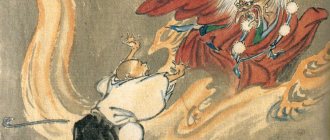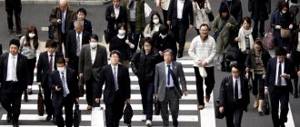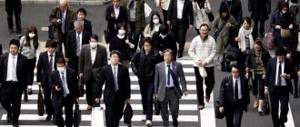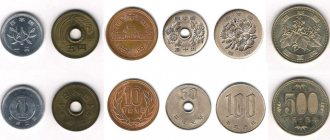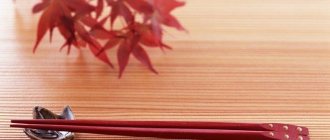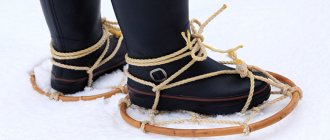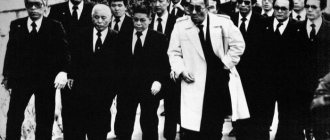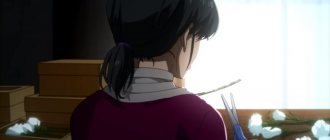Japan boasts a wide variety of individual martial arts. Many of them originated in ancient times, and make it possible to achieve truly superhuman abilities. Some masters still devote their entire lives to understanding unique fighting techniques. The presence of millions of followers of Japanese martial arts around the world does not allow such a unique art to sink into oblivion.
In our publication we would like to consider the most popular martial arts, types and differences. We will also find out what techniques and strategies for hand-to-hand combat exist.
Historical reference
The emergence of various types of martial arts is largely due to the traditions of the Japanese samurai, as well as the use of the caste system in society. In ancient times, warriors were required to master the mastery of various weapons. Considerable attention was paid to hand-to-hand combat techniques. All this was required by the samurai not only to protect their own families, but also to ensure the safety of members of the nobility, who were called shoguns.
Over time, the practical side of the issue faded into the background. Mastering martial arts techniques took on a more philosophical meaning. Japanese masters began to call such activities a path that has no end. Types of martial arts began to be used to strengthen the spirit and body, and improve certain skills.
Kendo
Kendo is a modern art of fencing, the roots of which are in the most ancient sword techniques that arose more than a thousand years ago in the Japanese archipelago. The bamboo shinai sword and the bogu protective armor are characteristic attributes of kendo. Today, the art of sword fighting is actively practiced in Japan itself, and is also widespread throughout the world. Development and improvement of one’s personality, strengthening the spirit, nurturing strength of character - this is what the path of the kendo sword recites.
The video shows a kendo competition between the German and British teams:
Japanese martial arts methods
There are several directions in Japanese martial arts. The so-called hard and soft methods of battle are used here. The concepts have different orientations. However, their character is largely interconnected.
The hard method involves the practice of counter-force. In fact, this means a direct attack on the opponent, which includes manifestations of direct aggression in combination with striking hand-to-hand or using bladed weapons. On the contrary, the use of defensive techniques makes it possible to resist such impulses and also forms part of the rigid concepts of combat.
Soft methods are characterized by the use of minimal force, which allows you to avoid damage, prevent attacks, or direct the kinetic energy of the opponent’s body in the right direction. An example is the so-called sliding technique, when the defender uses skillful movements to avoid the aggressive actions of the enemy and thereby unbalance him. If hard methods are distinguished by their straightforwardness, then soft ones are more flexible in tactical terms.
The history of BUDO
Every aikidoka and kendoka knows what the martial arts of budo are, but for people far from eastern martial arts, the word is often unfamiliar. The history of budo begins in the 8th century, when the samurai layer was formed - the military class, which over time turned into powerful clans. The first schools, called “ryu” in those days, arose in the same 8th century. Initially, free hunters and landless peasants who wanted to enrich themselves became warriors. They chose the path of battle, which they proudly called “The Way of the Bow and the Horse.” Over time, philosophy acquired the code of Bushido (“Way of the Warrior”).
Bujutsu required careful study and mastery, so specialized schools appeared. Samurai were trained to fight with katanas, naginatas, knives, and poles; They were taught to shoot a bow and use a fan against an opponent. There were schools in which any household items were used as weapons. Over time, the Japanese technique of fighting without weapons appeared - Jujutsu.
Among the oldest schools is Tenshin Shoden Katori Shinto Ryu. It appeared in 1447 and is recognized as the progenitor of modern schools. In 1960, it received the status of a National Treasure. Traditionally politically independent, the school accepted for training not only people from the military class, but also ordinary peasants and merchants. Students specialize in mastering the katana, pole, spear, naginata; master unarmed fighting, blade throwing, fortification, espionage; gain an understanding of battle tactics.
Budo has existed for many centuries
Sumo
So, let's move on to the story about the popular Japanese types of martial arts. The list opens with the famous sumo wrestling, which stands apart from other popular martial arts. Initially, this activity was a symbiosis of Zionist rituals and competition. Some ancient ceremonial practices that were traditionally used in such wrestling have survived to this day.
What rules apply in the presented form of martial arts? It's quite simple. To win, a wrestler only needs to force his opponent to touch the ground with any part of his body other than his feet. You can also simply push your opponent out of the ring line, which is lined with a special shimenawa rope.
Often the outcome of a sumo match is decided by moments. However, any battle is accompanied by preliminary preparations in the form of peculiar ceremonies. Such rituals usually take a lot of time.
It will not be a revelation to anyone that to achieve success in sumo a fighter must have an impressive body weight. In ancient Japan, obesity was not considered a vice. Wrestlers' mentors believed that kicking the ring awakened the spirits of the earth, which made the soil more fertile. Based on this, the larger the participants in the fight, the better. According to a special philosophy, there are no weight categories in sumo.
The biggest achievement in this type of martial arts is receiving the title of Yokozuna, in other words, the Grand Champion. It is worth noting that such a high status is assigned to a wrestler for life. If a champion begins to suffer defeats, he simply ends his career.
The life of a sumo wrestler
Sumo wrestling clubs recruit young men between the ages of 10 and 15, giving preference to strongly built recruits. A newcomer, entering the club of this unusual wrestling, has no rights, but acquires a lot of responsibilities. He must cook for the older students, clean and do their laundry. The beginner must follow all instructions instantly and without unnecessary questions. Such military discipline may scare off the insecure adept, but those who stay and go through such a school will become excellent fighters, and perhaps one of them will even receive the coveted title of absolute champion or yokozuna. Oddly enough, future rikishi come to this sport as ordinary young men, and acquire incredible size thanks to a special daily regimen and constant training.
Sumo wrestlers rise at dawn. After all the necessary procedures, they immediately go to many hours of grueling training. This Japanese wrestling requires complete dedication. This is the only way to withstand a 4-5 hour workout. After this, the wrestlers take a bath and go to breakfast. The main food at this time is a special stew of meat and vegetables - chanko. It is cooked in a cauldron over low heat and the recipe for this dish is familiar to every rikishi, since they are the ones who take turns preparing the food. After eating, sumo wrestlers go to sleep for 2-3 hours in order to convert food into fat as efficiently as possible. This is followed by evening training and dinner. Sumo wrestlers eat only twice a day, but a lot. They are also not limited in the consumption of alcoholic beverages, that is, drinking sake or beer at dinner is not considered something bad among sumo wrestlers.
Jujutsu
The school of jiu-jitsu was founded by the Japanese master Hisamori Takenouchi back in the 16th century. The type of martial arts was the result of the implementation of the idea of maximum economy of strength in hand-to-hand combat. The central place in tactics was occupied by all kinds of grabs of the enemy, as well as throws using the opponent’s energy.
The decisive importance in mastering jiu-jitsu techniques is given to breathing practices, fighting stances, and the ability to evade attacks. Despite this, martial arts also allows for the neutralization of the enemy, which is achieved through targeted impact on certain areas of the opponent’s body.
Judo
Translated from Japanese, the concept of judo means “soft path”. The origins of this type of martial arts are the famous master Kano Jigoro, who founded his own school of martial arts in the 80s of the 19th century. Many techniques were borrowed from jiu-jitsu. The master selected techniques that had the least likelihood of injury for both competitors, but at the same time were suitable for organizing spectacular competitions. Subsequently, Kano Jigoro introduced a whole host of spiritual practices into martial art, which allowed fighters to improve their own minds.
The type of martial arts involves, first of all, the comprehension of defensive techniques. The battle takes place without the use of bladed weapons. Victory is achieved through lightning-fast avoidance of attacks followed by the use of restraining, painful or choking techniques. Strikes are practically not used here. Therefore, this type of martial arts is suitable for children.
Jujutsu
Jujutsu is not a single art, but many schools throughout Japan that practice different types of hand-to-hand combat. Currently, jujutsu is more common in films and TV series than in life, since only certain types of it (judo and aikido) have been able to transform into commercially successful sports.
The roots of most schools of jujutsu go back to ancient times. They acquired their modern forms during the reign of the Tokugawa, when warriors began to earn their living by teaching martial arts.
In the minds of the Japanese, jujutsu is also associated with the concepts of “magic” and “witchcraft”. The great warriors of antiquity were also considered skilled magicians.
Aikido
Aikido is a unique fighting system developed by a Japanese martial artist named Ueshiba Morihei. The fundamental difference between martial arts and the practices of other eastern schools was the refusal to use offensive strategies and aggressive attacks. Subsequently, aikido began to be called the art of using the opponent’s strength against him.
It is worth noting that there are no competitions or championships in this sport. Despite this, aikido is extremely popular among representatives of dangerous professions. The type of martial arts is suitable for girls who serve in the police or organize seminars where they teach how to quickly neutralize an ill-wisher.
Kyudo
The fate of kyudo - the art of archery - largely repeats the fate of kendo. Like kendo, it was practiced by ancient warriors, and like kendo, it was forgotten after the Meiji Restoration. In 1949, the All Japan Kyudo Federation , and its revival as a popular sport began.
In ancient times, bows of different sizes were used. Modern sports kyudo uses a standard Japanese composite bow made of wood and bamboo, 2.21 m long. Targets are placed at a distance of 22 or 60 m. In addition to accuracy, the gracefulness of the archer's movements is also assessed. Therefore, kyudo is a popular women's sport and part of the school physical education program.
Yabusame, already mentioned above, is currently not a sport, but a type of show that takes place during various holiday celebrations.
Kendo
Kendo is a fairly popular martial art that involves the use of bladed weapons. Essentially, martial arts teaches fencing techniques using traditional Japanese swords. In ancient times, the acquisition of such skill was of extreme practical importance, since it made it possible to prepare skilled warriors for future battles. Today, kendo is nothing more than a hobby.
During training, special masks and armor are used that reliably protect the fighter’s body from injury. The weapons used are traditional bokken sticks made of bamboo.
Basic principles
Bu-do is subject to 4 principles :
- Ichi-gan (awareness, perception);
- Ni-soku (posture, movement);
- San-tan (concentration);
- Shi-riki (energy, technique).
These principles cover all aspects of martial art - not only physical, but also mental. Regular practice involves understanding the meaning and essence of the principles, not just knowing the terms.
Budo is subject to 4 principles
Karate-do
The type of martial arts originated on the Japanese island of Okinawa at a time when this territory had the status of a separate state. Karate-do originated as a method of self-defense that excluded the use of weapons. To this day, only techniques for practicing punches and kicks are used here.
The type of martial arts owes its popularity to a master named Funakoshi Gichin. It was thanks to this man that a large-scale campaign was carried out in the 20s of the last century, which helped to attract attention to this sport from the general public. Since then, karate-do has remained one of the most famous and sought-after martial arts throughout the world.
Anime Amino
▬▬▬▬▬▬▬▬▬▬▬▬▬▬▬▬▬▬▬▬▬▬
“If a person gets up after a fall, it’s not physics, it’s character.”
▬▬▬▬▬▬▬▬▬▬▬▬▬▬▬▬▬▬▬▬▬▬
Good day, dear AA members.
Kylie and the fifth department of the Development Department are in touch. I think many of you know or have at least heard about Japanese martial arts. In this post I would like to tell you about several types of Japanese martial arts and look a little at the history of their origin.
•━━▹ GENERAL
•━━━━━━━▹ INFORMATION
▬▬▬▬▬▬▬▬▬▬▬▬▬▬▬▬▬▬▬▬▬▬
▼
▿
The most famous martial arts (at least those that come to mind first) are karate, judo and aikido. Mostly due to the fact that they are the ones that are put on public display more, so to speak, and they are simply in great demand. Cinema also plays an important role in the promotion of Japanese martial arts. Agree, quite often when watching a movie you can see or hear the characters discussing Japanese martial arts. And if the film is in the action genre, then it is not surprising if one of the heroes knows karate or aikido. In fact, Japanese martial arts attract people not only because they offer to learn how to fight and crush everyone with one blow cooler than the Hulk, but they also literally fascinate with their atmosphere and sophistication. Plus, don’t forget about the huge number of legends associated with samurai. I think this is what drives people to train hard to achieve their goals. What makes Japanese martial arts more tempting are interesting and, for many, unusual terms that you are unlikely to encounter in other types of martial arts. For example, “sensei”, “dojo”, “tatami” and many others. Japan is the birthplace of a huge number of different martial arts, thanks to which a person can expand not only his physical capabilities, but also his spiritual ones.
•━━▹ BUJUTSU
•━━━━━━━▹ GEORGE OF MARTIAL ARTS
▬▬▬▬▬▬▬▬▬▬▬▬▬▬▬▬▬▬▬▬▬▬
▼
▿
Almost a century-old bujutsu is taken as the historical basis of all martial arts: “the art of killing” (not bad :new_moon_with_face: ). In fact, this is quite expected, since it is unlikely that martial arts were invented in order to purify one’s soul and comprehend Zen. Martial art is primarily about combat, in some cases to the death. Naturally, samurai and ninja used bujutsu the most. Since this martial art is quite universal and is used in various forms, it, of course, had a large technical arsenal. Specifically, bujutsu combined striking techniques with hands and feet - it was something like “kiya-kiya”, as many people like to play around with, only once 59 cooler; also a complex of throws, painful techniques (such as hitting only in certain places where the pain is felt much stronger), escapes and grabs, which were used and were very effective if a samurai/ninja confronted an armed man. From this we can conclude that bujutsu is the great-grandmother or great-grandfather of all currently existing Japanese martial arts. The most important goal and, in general, the essence of bujutsu is to effectively defeat the enemy, possibly with a fatal outcome. This is precisely what distinguishes bujutsu from all modern styles, which represent an ordinary victory in a sports match according to established rules. Bujutsu was that type of hand-to-hand combat where all means are good to defeat the enemy.
•━━▹ KARATE
•━━━━━━━▹ A KIND OF JAPANESE MARTIAL ARTS
▬▬▬▬▬▬▬▬▬▬▬▬▬▬▬▬▬▬▬▬▬▬
▼
▿
Karate is one of the most famous martial arts in Japan, literally translated as “empty hand.” Karate and karate-do originated not entirely in Japan, but in Okinawa, when it, in turn, was still an independent state. Karate was based on many types of Chinese martial arts, mainly kung fu and kempo. Karate is a type of self-defense, or, to be precise, a type of it without the use of weapons, where, in fact, striking techniques with hands and feet predominate. In karate there are also throws, but they are used very rarely, and in sports karate they are completely absent. Funakoshi Gichin is considered one of the first masters to introduce karate to Japan. He also founded such a popular style as Shotokan. There is a second version, which says that the Okinawan karate master Motobu Shoki defeated an American boxer in a duel, which is why interest in this, at that time little-known, martial arts from the southern province of Japan arose. At the moment, there are a large number of styles: from sports to applied, from practically non-contact to those where full contact strikes are used without gloves. In particular, many are attracted to the tameshiwari technique - breaking hard objects with hands or feet, as well as kata - educational formal complexes of movements containing encrypted applied techniques.
•━━▹ JUDO
•━━━━━━━▹ A KIND OF JAPANESE MARTIAL ARTS
▬▬▬▬▬▬▬▬▬▬▬▬▬▬▬▬▬▬▬▬▬▬
▼
▿
The second famous type of Japanese martial arts is judo, the name of which means “flexible way.” The founder of this type of wrestling is the master Jigoro Kano, who decided to take another type of martial arts as a basis - jujutsu, naturally changing many details. In particular, he filled his style with a new meaning, relied on technical and spiritual components, and on personal improvement. Judo, like karate, is a form of self-defense without weapons, but, unlike it, judo is dominated by throws, painful holds, holding and choking in a standing position, and there is practically no striking technique. Due to the high technical arsenal, physical strength plays a rather insignificant role in judo, which makes this type of wrestling more accessible to a large number of comers.
•━━▹ AIKIDO
•━━━━━━━▹ KIND OF MARTIAL ARTS
▬▬▬▬▬▬▬▬▬▬▬▬▬▬▬▬▬▬▬▬▬▬
▼
▿
Another equally popular form of Japanese martial arts is Aikido. The hieroglyphs “aiki-do” mean “the path to harmony of spirit”, I don’t know why, but this reassures me. According to one source, this type of martial art was founded by master Morihei Ueshiboy in the twenties of the last century. And unlike other types of martial arts, where the emphasis is on physical strength, in Aikido the most important thing is spiritual improvement and finding inner harmony. In short (and as clearly as possible), in aikido there must be a merger with the opponent, or rather, with his attack, and, as it were, the use of his strength against him. I can't imagine how this works. Aikido is a rather passive form of martial art, the arsenal of which is dominated by waste techniques and many others, thanks to which you can defeat your opponent by dodging blows and then neutralizing him. For women, this type of martial arts is the most suitable and interesting. But you shouldn’t think that aikido is so peaceful, since in the Japanese special services and the Self-Defense Forces it is aikido that is studied as the main form of martial arts.
•━━▹ IAIDO
•━━━━━━━▹ THE ART OF WORKING WITH KATANA
▬▬▬▬▬▬▬▬▬▬▬▬▬▬▬▬▬▬▬▬▬▬
▼
▿
And the last type of martial art that I want to tell you about is Iaido. This is the art of working with edged weapons, and specifically with a katana, a combat sword with a steel blade.
•━━▹ CONCLUSION
•━━━━━━━▹ FAREWELL
▬▬▬▬▬▬▬▬▬▬▬▬▬▬▬▬▬▬▬▬▬▬
▼
▿
One of the most important advantages of Japanese martial arts is that they enrich a person not only physically, but also spiritually, thereby making him more harmonious, balanced and self-confident. Perhaps it is precisely this, constant improvement, not only physical, but primarily spiritual, that lies the highest meaning of practicing Japanese martial arts.
That's all, I hope you learned something new and interesting for yourself.
▬▬▬▬▬▬▬▬▬▬▬▬▬▬▬▬▬
Huge thanks to Kemi for the cover. :hearts:
Uniqueness
#DepartmentofDevelopment #FlockAmino
#ReferenceOtaku
▬▬▬▬▬▬▬▬▬▬▬▬▬▬▬▬▬
